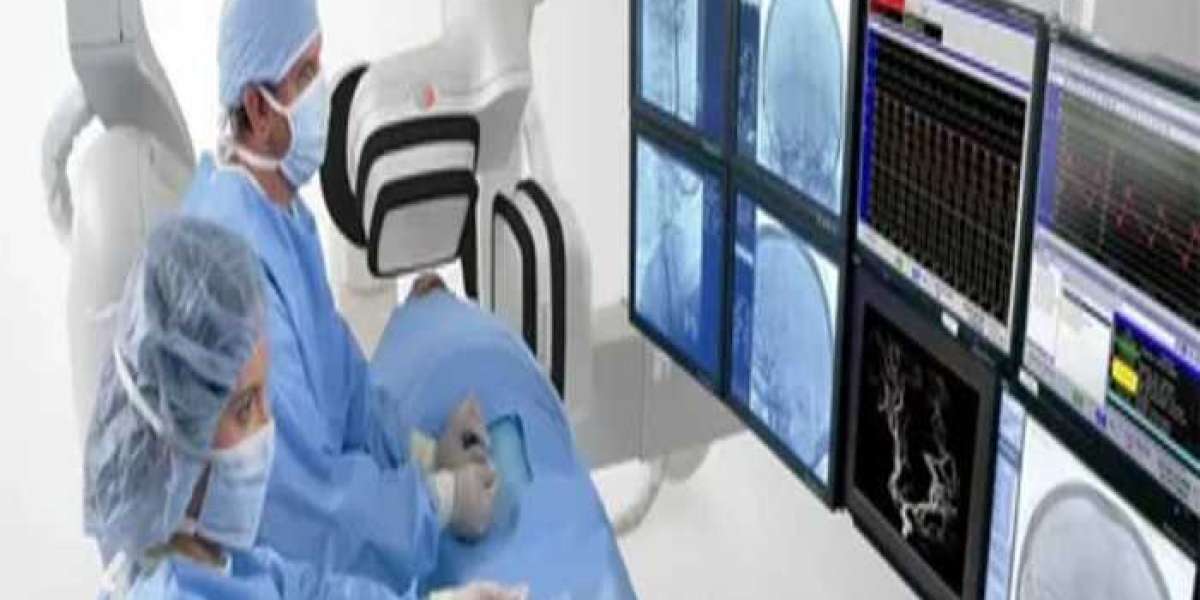Advancements in technology over the past few decades have opened new frontiers in healthcare. One field that has especially benefitted is neuroscience, as innovative tools now allow physicians to treat conditions in minimally invasive ways that were not possible before. These neuro-interventional devices have revolutionized the management of various neurological and neurovascular disorders. In this article, we will explore some of the groundbreaking technologies in this domain and how they are helping improve patient outcomes.
A Brief History of Development
The concept of employing catheter-based techniques for accessing the brain dates back to the mid-20th century. However, it was not until the late 1980s and early 1990s that the first dedicated neuro-interventional devices started emerging. Pioneers in the field experimented with microcatheters and guidewires to navigate the intracranial vasculature and perform selective catheterization of arteries. Over time, additional devices were created for performing thrombectomy, aneurysm coiling, and intra-arterial therapies. Constant innovation has allowed the field to snowball at a rapid pace, with new generations of adjunct technologies bringing incremental improvements. Today, neurointerventional suites are equipped with state-of-the-art digital imaging and navigation aids that place the treatment team in the driver's seat.
Applications in Ischemic Stroke Management
One of the most promising applications of Neuro-interventional Devices is in the management of acute ischemic stroke. Every year, millions of people worldwide suffer strokes caused by a blocked artery in the brain. Traditional treatment with clot-busting drugs can only benefit a subset of patients who arrive at hospitals within a narrow time window. Mechanical thrombectomy devices offer hope for extending this time window. Three main categories of these devices are in use - stent retrievers, aspiration systems, and catheter-based clot disruption technologies. Stent retrievers work by deploying inside the clot and capturing it when pulled out, while aspiration uses suction to remove the clot. Controlled studies have demonstrated the superiority of thrombectomy over standard medical management alone in improving functional outcomes after stroke. As a result, it is now the standard of care for eligible patients presenting within 6-24 hours after onset.
Treating Brain Aneurysms
Another major application of neuro-interventional tools lies in the management of cerebral aneurysms - abnormal bulges or weak spots in the walls of brain arteries. Ruptured aneurysms cause life-threatening hemorrhagic strokes by spilling blood into the brain tissue or ventricles. Coiling devices such as platinum coils were among the earliest applications of endovascular techniques for treating aneurysms in a minimally invasive way as an alternative to open surgery. These coiling procedures work by packing the aneurysm sac with soft, flexible coils to promote clotting across its neck. Over the last two decades, advancements in coil, catheter, and imaging technology have increased completion and occlusion rates. Adjunct devices like flow diverters and balloon-assisted coiling have further widened the endovascular treatment armamentarium. Many institutions now regard coiling as the first-line approach for suitable aneurysms due to lower periprocedural risks compared to open surgery.
Revolutionizing Deep Brain Stimulation Therapy
Deep brain stimulation (DBS) refers to the use of continuous electrical stimulation of specific brain targets via implanted electrodes to treat various neurological and psychiatric conditions. Traditionally, DBS implantation has relied on open craniotomy for electrode placement. However, MRI-conditional devices have now enabled targeting with real-time image guidance during a minimally invasive procedure. This has paved the way for novel clinical applications of DBS beyond its established use in Parkinson's disease and essential tremor. Recent studies demonstrate promising results using neuro-interventional techniques for DBS to treat conditions like chronic pain, Tourette's syndrome, and treatment-resistant depression with fewer risks than traditional open surgery. As technology improves targeting ability and responsiveness to individual patient needs, DBS may help address diseases previously thought untreatable.
Emerging Devices for Endovascular Neuro-Oncology
Endovascular techniques are also undergoing trials for newer oncology applications like treatment of brain tumors. Devices delivering embolic agents, chemotherapy drugs, gene therapy vectors, or thermal ablation directly into brain tumors via catheterization of feeding arteries aim to improve outcomes over open surgery while minimizing risks of treatment in vulnerable patients. Preliminary clinical trials show feasibility of using neuro-interventional methods for recurrent glioblastoma multiforme, metastatic cancers, and meningiomas. Challenges include ensuring complete tumor coverage and limiting damage to surrounding normal brain tissue. Further research optimizing catheter design, navigation capabilities, visualization techniques, and adjunct drug/material delivery may help realize the full potential of these minimally invasive approaches and expand cancer treatment options.
Role in Cerebrovascular Conditions Beyond Stroke
In addition to standard uses like aneurysm coiling and stroke intervention, newer applications of neuro-interventional technology continue emerging annually across diverse cerebrovascular conditions. Devices for carotid artery stenting and angioplasty provide minimally invasive options for carotid occlusive disease, a major cause of preventable strokes worldwide. Studies demonstrate they can effectively reduce carotid stenosis when surgery is high risk. Other areas seeing gradual introduction of catheter-guided techniques include pediatric interventions, vein of Galen malformations, cerebrovascular malformations, and management of vascular events associated with neurodegenerative diseases like CADASIL. Overall, endovascular therapies have gained acceptance as alternatives or adjuncts to open surgery for an ever-increasing number of cerebrovascular pathologies.
In neuro-interventional devices herald an exciting era of advanced minimally invasive treatment possibilities within neuroscience. Continuous innovation promises to further expand applications to previously untreatable conditions and improve outcomes. Growing evidence demonstrates several devices have become the new standard of care. Multidisciplinary synergies between engineering, neurology, neuroradiology and other specialties will likely catalyze these translational developments. As training programs evolve globally and multinational research networks form, more patients worldwide may gain access to game-changing technologies. While challenges around optimizing new tools, demonstrating long-term results and integrating care pathways remain, neuro-interventional strategies have undoubtedly strengthened the armamentarium against debilitating neurological disorders.
Explore More Related Article On- Beryllium Market
For Deeper Insights, Find the Report in the Language that You want.
About Author:
Ravina Pandya, Content Writer, has a strong foothold in the market research industry. She specializes in writing well-researched articles from different industries, including food and beverages, information and technology, healthcare, chemical and materials, etc. (https://www.linkedin.com/in/ravina-pandya-1a3984191)














